By Virginia Phillips
[Note: Virginia was a speaker for one of our webinars this past fall on this project.]
A year or so ago, it struck me that I lived in one of the best places in the world, but my yard was full of plant species not from this place. Was I really saying Colorado is awesome, just not in my backyard?
About half of my yard was formally landscaped with non-native garden beds and manicured non-native lawns. The other half was a wild area covered mostly with invasives, which was awful. I had failed for years to convert this wild area to a thriving non-native grass and shrub space.
What I needed was a new approach and a Colorado landscape and ecosystem.

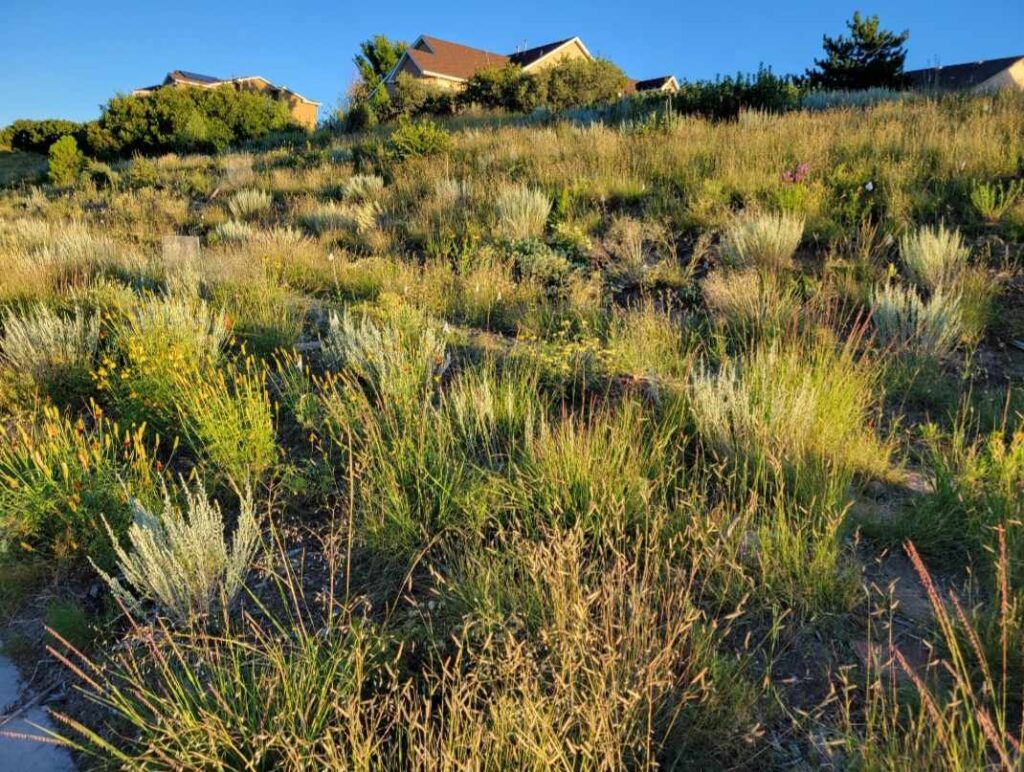
I bucked the norm and committed to a multi-year native landscape DIY project even though I had a real gap between know-how and a Coloradoscape.
This project started by defining what I would call a native plant. My definition is something that historically naturally grows in my county, but I also considered some plants to be native if they were naturally found in the region.
I then categorized everything in my yard as native or non-native. Whoa, I was shocked! Only about 15% of my yard qualified as native. That meant most of my yard’s plants, weeds, and grasses needed to go. It was as if I was writing their eviction notice when I identified them as non-native. I would tell myself, “You go, you go, and you are going too!”
I had lilacs, a burning bush, Japanese barberry, broome grass, cheatgrass, bindweed, a large Australian pine, Russian sage, daylilies, Kentucky bluegrass, spirea bushes, tumbleweed, and much more offering little value to Colorado.
After that, I identified natives in my neighborhood. I did this by visiting open spaces and undeveloped areas within a mile of my home. I also used several books I bought from the Colorado Native Plant Society (CoNPS), such as The Flora of Colorado 2nd edition, and apps like iNaturalist.
I tapped into a number of other learning resources. I watched videos online, attended native plant events, asked neighbors questions, contacted the master gardeners at Colorado State University, and spent hours looking at plants online, in books, and in person. The more I learned, the more I wanted to know, and the more dedicated I was to making dramatic changes.
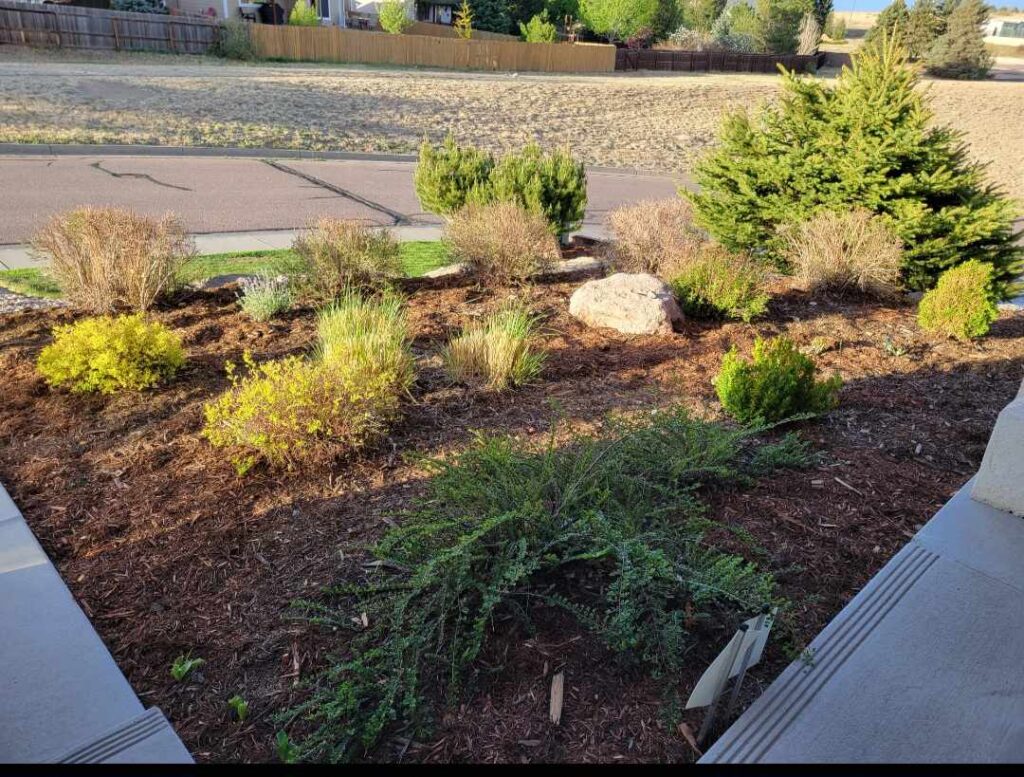
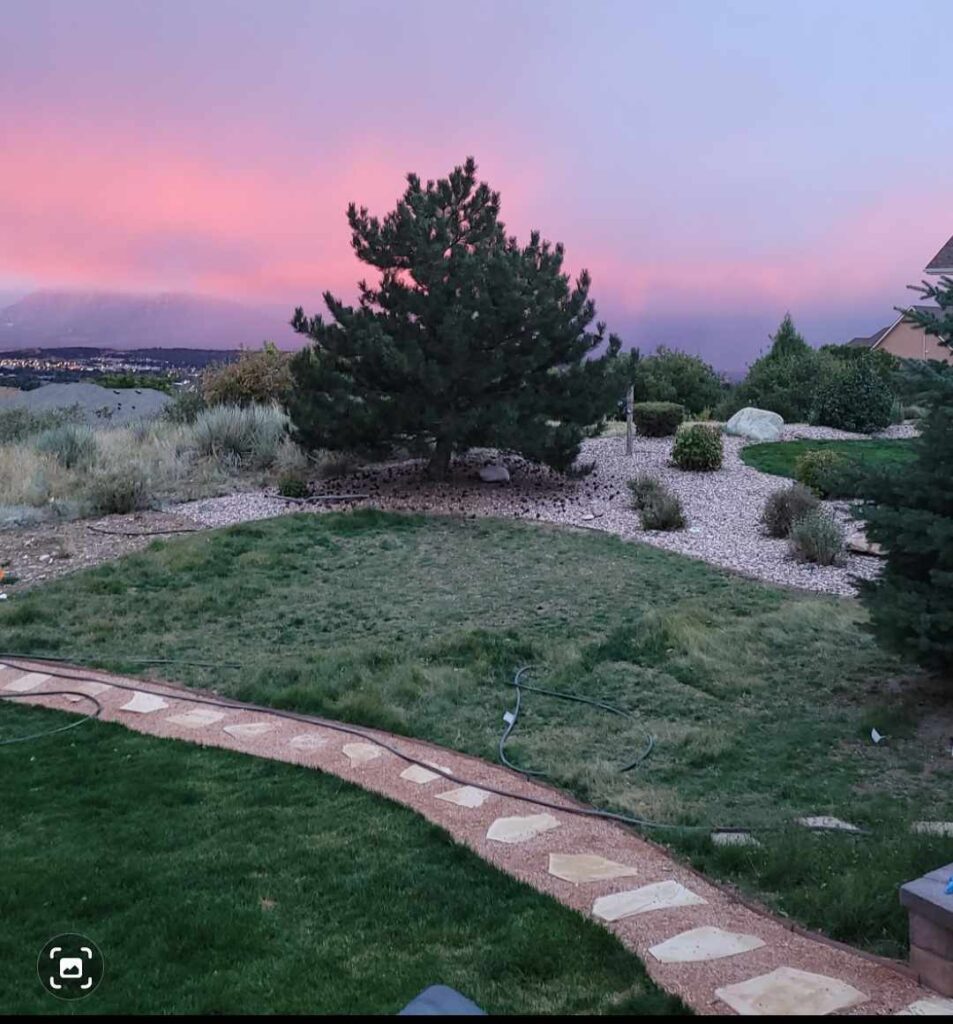
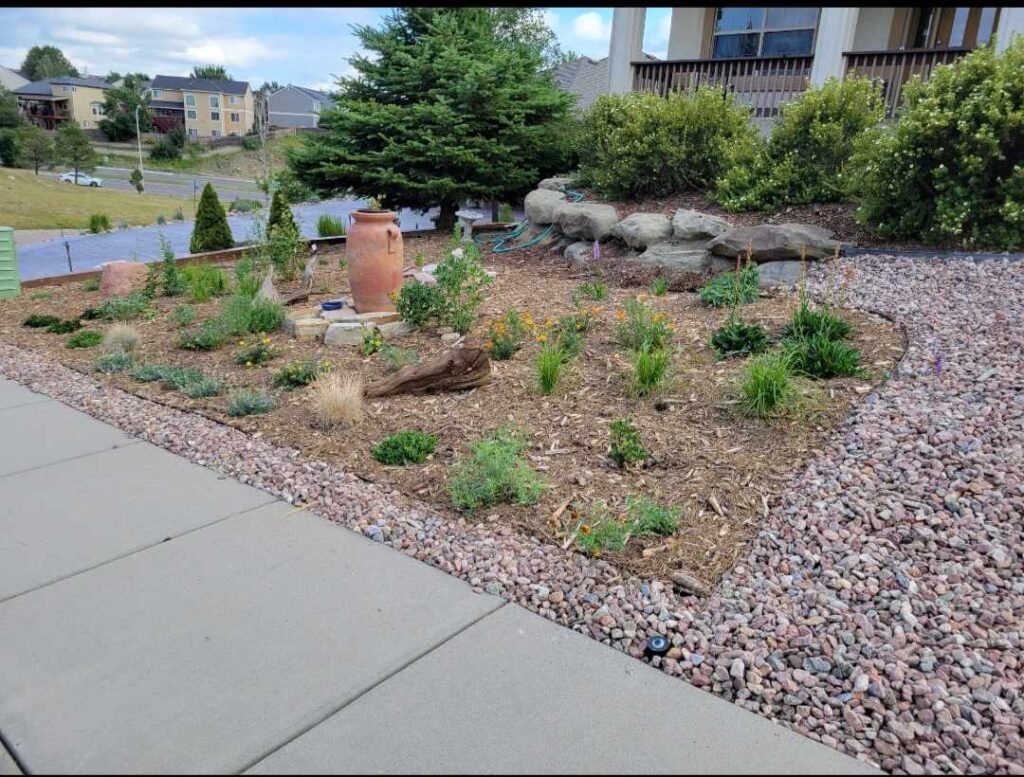
I began dreaming of enormous plans for my yard until I learned about habitat certifications. Monarch Watch, CoNPS, Audubon Rockies, Colorado Wildlife Federation, and others had certifications to raise awareness for their missions. However, their certification qualifications helped me to let go of my lofty dreams and realize my true goals for my makeover.
I learned through them that my south-facing slope without tree cover is valued by butterflies, bees, deer, birds of prey, and other wildlife. This information changed my focus from designing a space for me to designing a space for them.
I created a list of what butterflies needed, including water stations, rocks, windbreaks, grasses, and yellow, red, and blue native forbs with nectar that flowered throughout the year. I narrowed the list by eliminating plants not hyper-local to my area and suited for my space.
Some of the plants I listed included little bluestem (Schizachyrium scoparium), Indian rice grass (Eriocoma hymenoides), sideoats grama grass (Bouteloua curtipendula), showy milkweed (Asclepias speciosa), green comet milkweed (Asclepias viridiflora), old field goldenrod (Solidago nemoralis), green rabbitbrush (Chrysothamnus viscidiflorus), blue sage (Salvia azurea), black-eyed susans (Rudbeckia hirta), pussytoes (Antennaria neglecta), blazing star (Liatris punctata) and many others.
I planned to add these species to keystone plants already in my yard such as western snowberry (Symphoricarpos occidentalis), skunkbrush sumac (Rhus trilobata), wood’s rose (Rosa woodsia), chokecherry (Prunus virginiana), fringed sage (Artemesia frigida), false golden-aster (Heterotheca hirsutissima) and others.
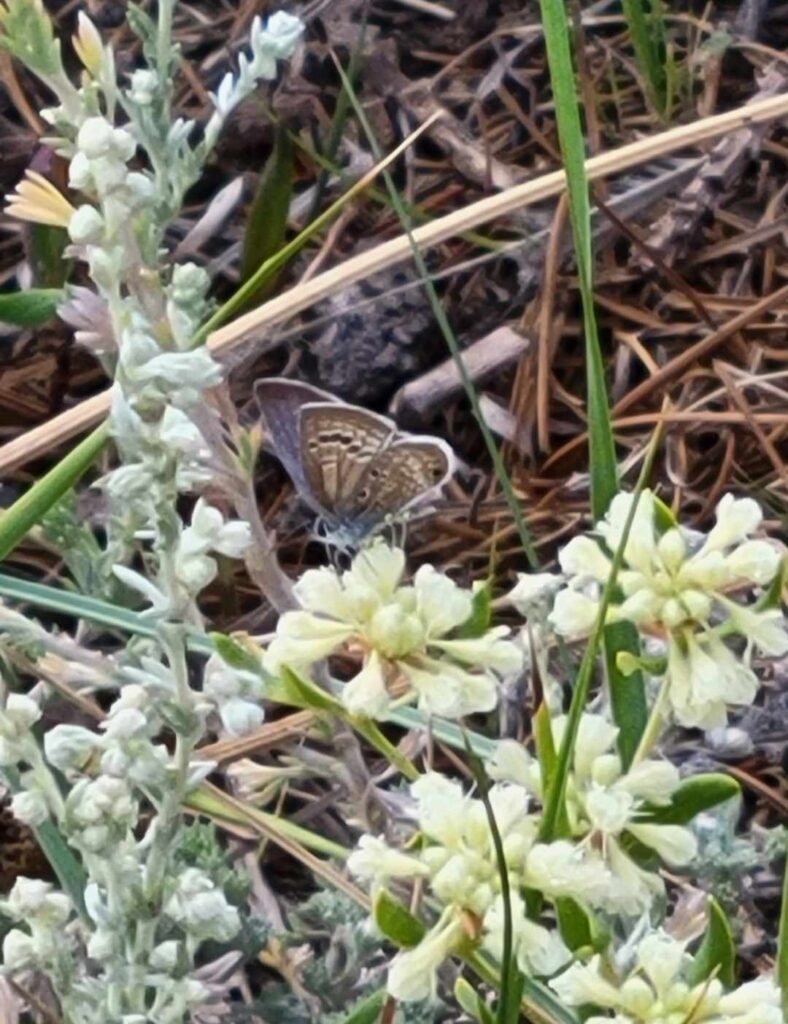
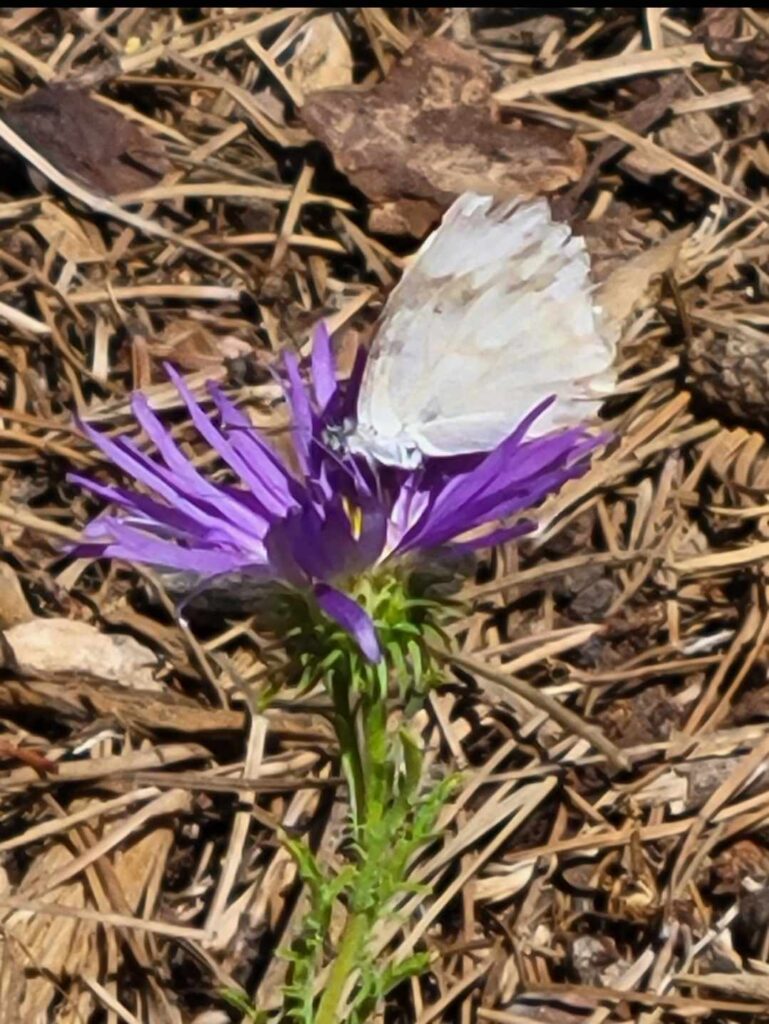
I wanted to create a grassland area for the great horned owl on my roof. That led me to take a Colorado Springs Utility class to convert half of my Kentucky bluegrass lawn in my backyard to a buffalo and bluegrama grass area. What I did can be found here.
Then, I began ethically sourcing plants, and when I couldn’t find plants, I ethically gathered seeds and bought seeds for my project. This led me to learn about winter sowing.
I have never grown anything from seed and have historically been known for killing houseplants. I was given enough propagation education and a good dose of courage from Wild Ones Front Range to try it. It was rewarding and successful. In early Spring, I began removing plants, pulling or cutting weeds, and overplanting with my natives. Then, every day during the growing season, I would monitor the project and walk my yard.
The part that stumped me the most was designing a Coloradoscape. This was easier than I imagined it to be because I focused on the needs of wildlife.
I did have some struggles. For example, I only labeled the tops of seeding trays. When they got separated from each other, I no longer knew how to care for the seedlings because I couldn’t identify them. I didn’t protect my seedlings enough from the hot summer sun or wildlife and I may have overwatered a volunteer Pinyon tree and killed it.
Overall, it has been wildly successful for me, and it is incredible to watch this Coloradoscape come to life. About 75% of my yard is now native. It is water-wise, fire-wise, and Colorado proud. I am eager to see how it matures.
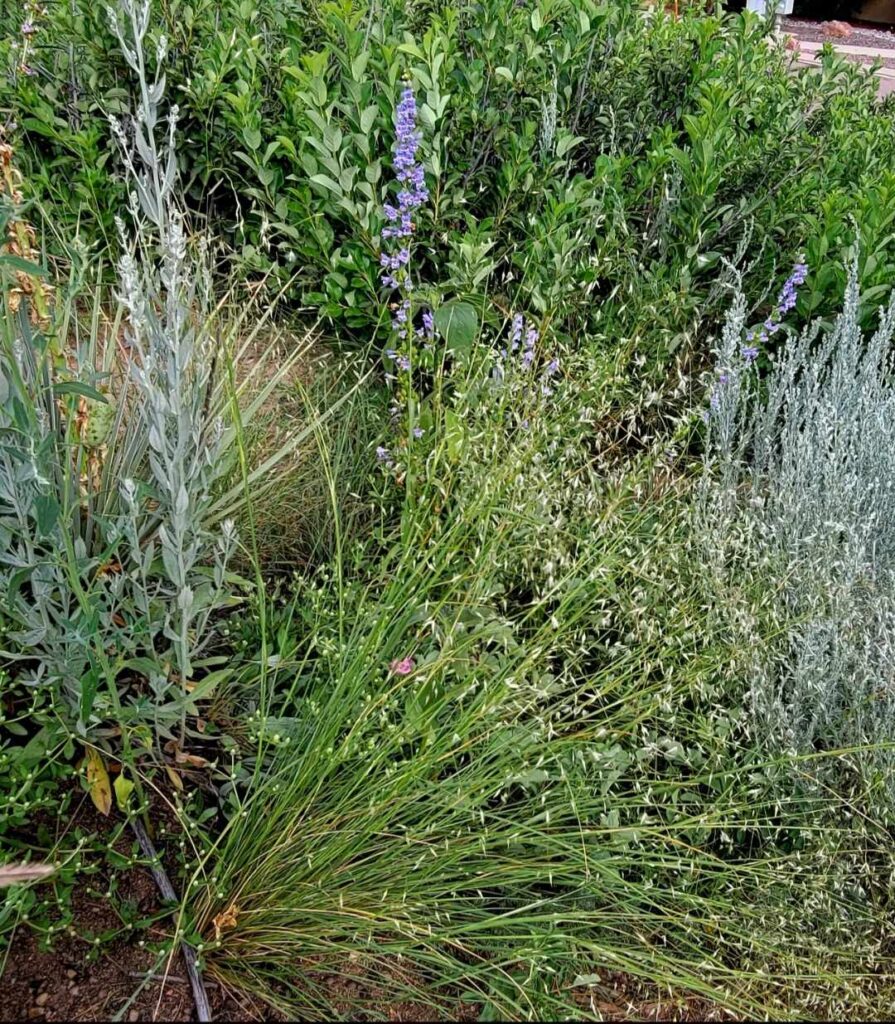
Curious to learn more about transforming your garden into a habitat with Colorado native wildflowers, grasses, shrubs, and trees? Check out our native gardening toolkit, register for an upcoming event, subscribe to our newsletter, and/or become a member – if you’re not one already!
